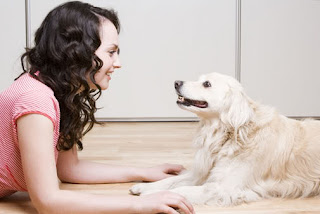.jpg) You may have no idea where to start when training your dog, but you can have a well-trained dog like the ones you have always heard about if you know a few tips. Everything you need to know is contained in this article, so continue reading to learn more!
You may have no idea where to start when training your dog, but you can have a well-trained dog like the ones you have always heard about if you know a few tips. Everything you need to know is contained in this article, so continue reading to learn more!
The sooner you start obedience training your dog, the better. While any dog can be trained, puppies respond the best to it. When you train your dog as a puppy, he will be a well-behaved dog throughout his life.
When dog training, use different kinds of treats as a reward. Get treats that your dog will want more than the normal treats they get every day. These unique treats will make them more eager to perform well in training.
Make sure your teething puppy has a bunch of chew toys readily available to him, and keep other things he likes to chew on, away from him. Instead of allowing it to continue chewing on your important furniture or toys, provide a well-loved chew toy. Teething pain can be soothed by a washcloth that has been soaked in water and frozen.
Choose one phrase to use every time you want your dog to do his business. Tell the dog a phrase, like "go potty!", whenever you go outside to help your dog keep the goal of going outside in mind.
For example, you may want your dog to learn how to hold a specific object in his mouth, such as a favorite toy. Whenever the dog puts his mouth on the toy, immediately sound your dog training clicker and reward him with a treat. Once he has done it a couple of times, you should wait until they put the toy into their mouth. Immediately thereafter, use the clicker and offer the reward. After this, you should only reward your dog after he holds the toy in his mouth.
Keep your dog's wants and motivations in mind when training. Dog training can be a learning experience, especially with it comes to determining what motivates your pet. All dogs respond well to positive reinforcement, so keep this in mind while training your dog. When the dog is happy, he will want to perform better.
If you are training more than one dog, remember that some breeds of dogs can be trained together, but some breeds cannot. If you attempt to train your dogs at the same time and notice that they are not able to concentrate the way that you want them to, you may need to train them separately.
Most cases associated to dog bites result from fear. This happens when a dog feels frightened, threatened, and trapped. Do not use force when training your dog. Your dog might snap and bite you. Your dog will feel proud and want to please you as his leader.
Dogs are just like people; they love hearing the sound of their own names and the use of the name will call them to attention. Call your dog by name as much as possible when you are first getting to know your pup; this will establish a connection between hearing the name and giving positive attention to the speaker. The best dog names are ones that are short and are different from other commands.
Communication is a crucial component of the dog training process. You must give consistent and clear signals when you training your dog. This especially applies to your verbal and nonverbal interactions, but the rewards you give and the corrections you make should be consistent, too. Remember to always pay attention to the communication signals from your dog. His body language can tell you a lot about how he's feeling and what he's in the mood for.
Use the information you learned in this article to help you start to train your dog. Knowing proper information can help individuals in training their dog effectively.
NOTE: Please visit these websites for more dog and puppy training secrets and tips:
.png)
